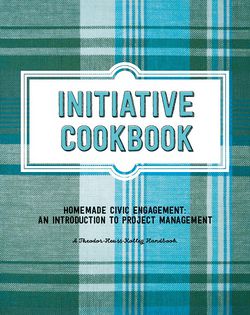Difference between revisions of "Who Can Change Things..."
| Line 62: | Line 62: | ||
<hr style="border:0; border-bottom: 1px dashed #d21e3d; width: 100%;"> | <hr style="border:0; border-bottom: 1px dashed #d21e3d; width: 100%;"> | ||
*[[Project Development]] | *[[Project Development]] | ||
| + | **[[Collaboration Canvas]] | ||
| + | **[[Who Can Change Things?]] | ||
| + | **[[Change Your World with 50 Euro]] | ||
| + | **[[Project Inspiration]] | ||
| + | **[[Logic of the project]] | ||
| + | **[[Silent Journey]] | ||
| + | ** [[Ideas that match]] | ||
| + | **[[Checklist: Project Concept]] | ||
| + | **[[A Shared Ideaspace]] | ||
| + | **[[Checklist: Project Concept]] | ||
| + | **[[Concept Map]] | ||
| + | <hr style="border:0; border-bottom: 1px dashed #d21e3d; width: 100%;"> | ||
| + | |||
| + | ===Theory:=== | ||
| + | * [[Empowerment]] | ||
| + | <hr style="border:0; border-bottom: 1px dashed #d21e3d; width: 100%;"> | ||
| + | |||
| + | <div style="width: 290px; background: #eee; border: 0px; padding-left: 20px; padding-top: 10px; padding-bottom:10px; padding-right: 10px; margin: 0px;"> | ||
| + | ====New Handbook==== | ||
| + | [[File:Cover-cookbook.jpg | 250px | link=http://www.theodor-heuss-kolleg.de/service/materials/cookbook-for-initiatives/]] | ||
| + | |||
| + | H. Fahrun, E. Skowron, <br> | ||
| + | N. Zimmermann | ||
| + | |||
| + | '''Initiative Cookbook''' | ||
| + | <br> | ||
| + | Homemade Engagement. An Introduction to Project Management. | ||
| + | |||
| + | MitOst Editionen 2015: [http://www.theodor-heuss-kolleg.de/service/materials/cookbook-for-initiatives/ Read] | ||
| + | |||
| + | </div> | ||
| + | |||
</div> | </div> | ||
Revision as of 17:18, 27 April 2016
Contents
In short
- Time: approximately 60 minutes
- Material: usual moderation material
Preparation
Facilitators mark out four circles on the floor with adhesive tape representing the societal sectors
- Individual (large circle in the middle),
- Politics,
- Companies,
- Civil Society
Introduction
At the beginning all participants stand in the large circle labelled “Individual”.
The facilitators explain that the activity begins with the individual: we live together in a society in which we can assume different roles which we can shape together.
- as private individuals (employees, consumers, voters...),
- as businesspeople,
- politicians,
- or activists
Action within a sector
In small groups, the participants now discuss the first question displayed on the wall. They receive moderation cards on which to write their answers in summarized form:
- What options are available to you and other people in this field of action if you want to change something?
The question may encompass the following aspects:
- What approach is taken by the actors in question?
- What can people do on a small or a large scale in their specific field(s)?
- If the question appears to be too abstract, participants may collect concrete examples
[10 minutes]
Action across sectoral borders
The participants then discuss the second question. Facilitators distribute paper sheets in the form of arrows. The findings are written on the paper arrows as keywords:
- From your field of action, how can you influence the other actors?
[15 minutes]
Presentation
All groups present first the possibilities for actions which they wrote on their moderation cards.
In a second round they present their influence arrows.
Reflection
- Are any actors missing?
- How great do you consider the potential for change of each of the various actors to be?
- What are the crucial requirements for change?
- Where do you see opportunities to form effective alliances between actors?
- Who holds the power to make decisions in the different areas?
- Where do you see opportunities to form effective alliances between actors?
- What such alliances are you currently aware of?
Source
During:
Theory:
New Handbook
H. Fahrun, E. Skowron,
N. Zimmermann
Initiative Cookbook
Homemade Engagement. An Introduction to Project Management.
MitOst Editionen 2015: Read

